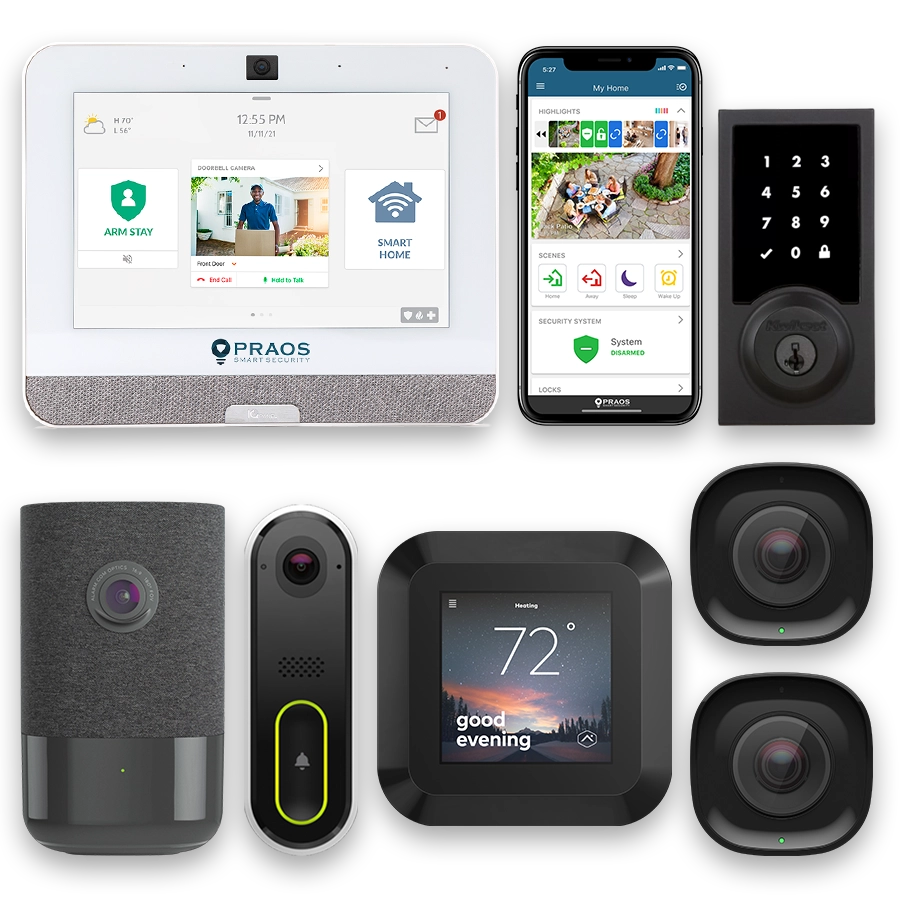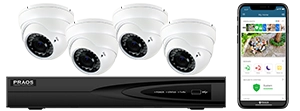- Historical Overview of Urban Safety in Richmond
- Current State of Surveillance Systems in Richmond
- Importance of Integrated CCTV and Cybersecurity Systems
- Case Studies: Successful Implementations in Other Cities
- Technological Advancements in CCTV and Cybersecurity
- Policy and Regulatory Frameworks Governing Surveillance
- Public Perception and Privacy Concerns
- Future Prospects and Recommendations for Richmond
Historical Overview of Urban Safety in Richmond
Urban safety has been a significant issue in Richmond, Virginia since its founding in 1737. Historically, this mid-Atlantic city has faced various challenges, ranging from petty crime to more severe offenses such as violent crime. Understanding the evolution of Richmond’s strategies to mitigate crime provides insight into current and future measures.
In the early 20th century, the city relied heavily on foot patrols and community vigilance. Law enforcement officers were visible in neighborhoods, and community cooperation was essential. However, as the city grew, so did the complexity of managing urban safety. By the mid-20th century, Richmond had begun to invest in more advanced crime prevention methods, including the use of technology to aid law enforcement efforts.
Richmond’s journey towards improved urban safety took a significant leap in the 1990s with the introduction of closed-circuit television (CCTV) cameras in public spaces. Initially, these systems were limited in scope and primarily used for monitoring traffic and specific high-crime areas. Over the years, the utility of these systems expanded, becoming an integral part of the city’s safety framework.
Emphasis on community policing also saw an increase during this period. The Richmond Police Department (RPD) initiated several programs aimed at enhancing public trust and cooperation between residents and law enforcement. This strategy was particularly effective in building a collaborative approach to urban safety.
Entering the 21st century, the rise of digital technologies became a pivotal point in the city’s criminal justice strategy. Integration of more sophisticated CCTV systems and the introduction of cybersecurity measures marked a new era in Richmond’s urban safety protocols. These digital tools allowed for real-time monitoring and analysis, drastically improving response times and crime-solving capabilities.
An essential milestone was the establishment of the Richmond Real-Time Crime Center (RTCC) in 2018. The RTCC utilizes a combination of CCTV footage, automated license plate readers (ALPRs), and data analytics to provide law enforcement with actionable intelligence. By consolidating various data streams, the RTCC enhances situational awareness and aids in preemptive policing efforts.
Throughout these developments, Richmond has continuously adapted its strategies to address emerging threats. The integration of modern technology with traditional methods of policing has made significant inroads in reducing crime rates and enhancing the overall sense of safety and security for its residents.
Current State of Surveillance Systems in Richmond
Richmond, a city known for its robust urban setting, has increasingly recognized the importance of advanced surveillance systems to ensure public safety. Currently, the city deploys a variety of CCTV systems in public and private spaces, yet there remain gaps in integration and cybersecurity that need to be addressed to improve overall efficacy.
Local companies such as Praos have been pivotal in enhancing residential security through comprehensive home monitoring solutions. Praos, a leading home security company in Richmond, offers a monitored new system plan where new customers receive FREE Equipment and Free Installation. This not only makes advanced security accessible but also encourages widespread adoption.
Moreover, Praos’s commitment to a connected home experience is notable. The company provides a single integrated app for handling security, automation, and surveillance. This connected approach is essential in an era where residential, and public safety systems need to be meticulously coordinated. By enabling families to monitor their homes remotely, residents can be assured of continuous protection.
Besides hardware and installation services, the affordability of Praos’s offerings is a significant factor. With rates starting at just $19.95 per month, the adoption barrier is substantially lowered. This contributes to a more secure urban environment as more households can afford to implement these advanced systems.
In Richmond, where monitoring and protection are paramount, Praos’s initiative aligns well with the city’s broader safety goals. By integrating advanced home security systems with holistic urban safety strategies, both public and private spaces can benefit. While the existing surveillance infrastructure in Richmond is commendable, companies like Praos highlight the importance of continual enhancement and integration, ensuring a safer city for all its residents.
Importance of Integrated CCTV and Cybersecurity Systems
The integration of CCTV and cybersecurity systems holds significant importance for enhancing urban safety in Richmond. As urban environments become more complex and densely populated, traditional surveillance methods prove insufficient in addressing the multifaceted challenges posed by modern threats. Integrating CCTV with advanced cybersecurity measures ensures a more robust and reliable safety infrastructure, providing numerous benefits.
Crime Deterrence and Investigation
The integration helps in real-time monitoring and quick response to incidents. CCTV cameras act as a deterrent to potential criminals, knowing their activities are being monitored. Additionally, in the event of a crime, footage captured by these cameras provides valuable evidence, aiding law enforcement in investigations and prosecuting offenders.
Operational Efficiency
An integrated system streamlines various processes, reducing the need for manual monitoring and intervention. Automated alerts can be generated when suspicious activities are detected, allowing security personnel to focus on higher-priority tasks. This increases the overall efficiency of the urban safety framework.
Data Integrity and Security
Cybersecurity measures are crucial to protecting the integrity of data captured by CCTV systems. With the rise of cyber threats, ensuring that video feeds are secure from tampering and unauthorized access is essential. Encryption, firewalls, and regular security audits are some of the measures used to safeguard this data.
Interagency Collaboration
Integrated systems facilitate better communication and data sharing between various agencies, such as law enforcement, emergency services, and municipal authorities. This collaboration enhances the effectiveness of response strategies and ensures a more coordinated approach to urban safety.
Resource Allocation
By analyzing data from integrated CCTV and cybersecurity systems, authorities can identify patterns and hotspots for criminal activities. This information is instrumental in allocating resources more effectively, deploying personnel to areas where they are most needed, and implementing preventive measures proactively.
Public Confidence and Trust
When citizens are aware that their safety is being actively monitored and protected through reliable systems, it fosters a sense of security and public trust. Transparent communication about the measures in place and their effectiveness can further enhance this confidence.
The integration of CCTV and cybersecurity systems in Richmond is not just a technological enhancement but a comprehensive strategy to ensure a safer urban environment. As these systems evolve, they will continue to play a critical role in addressing the challenges of urban safety in an increasingly digital world.
Case Studies: Successful Implementations in Other Cities
Several cities around the world have successfully implemented integrated CCTV and cybersecurity systems to enhance urban safety. These case studies provide valuable insights into the practical benefits and challenges that come with deploying such systems.
London, United Kingdom
London is one of the most surveilled cities globally, with an extensive network of CCTV cameras. The integration of CCTV with advanced cybersecurity measures has been pivotal in crime prevention and counter-terrorism efforts. The city’s *Ring of Steel*, a collection of barriers, checkpoints, and video surveillance across central London, is a notable example.
According to the *Metropolitan Police Service*, this integrated approach has significantly reduced crime rates in targeted areas. The use of real-time analytics and facial recognition technology has also aided in the swift identification and apprehension of suspects.
New York City, USA
In New York City, the Lower Manhattan Security Initiative (LMSI) is an exemplary model. The initiative utilizes a combination of CCTV cameras, license plate readers, and cybersecurity tools to monitor and protect public spaces.
The *New York Police Department (NYPD)* reports that this system has been instrumental in thwarting potential terrorist attacks and reducing crime rates. The integration of these technologies allows for real-time data sharing and operational coordination among various law enforcement agencies.
Singapore
Singapore’s *Safe City Test Bed* project integrates CCTV with Internet of Things (IoT) devices to enhance urban safety. The system employs advanced data analytics and AI, providing law enforcement with real-time insights into potential security threats.
Research from the *Singapore Police Force* indicates that this initiative has led to a notable decrease in crime. The real-time data allows for proactive measures, ensuring prompt responses to incidents and improved public safety.
Seoul, South Korea
Seoul has implemented an extensive network of CCTV cameras integrated with facial recognition and automated incident detection systems. The initiative focuses on preventing crime and ensuring rapid response to emergencies.
An analysis by the *Seoul Metropolitan Government* shows a reduction in crime rates and quicker resolution times for incidents. The system enables efficient resource allocation by identifying high-risk areas and times.
These case studies highlight the effectiveness of integrating CCTV with cybersecurity systems in enhancing urban safety. While the specific technologies and methods may vary, the common thread is the significant improvement in crime prevention and emergency response capabilities in these cities.
Technological Advancements in CCTV and Cybersecurity
Technological advancements in CCTV and cybersecurity are continually reshaping the landscape of urban safety in Richmond. These innovations are crucial for enhancing the efficiency and effectiveness of surveillance systems while addressing new and evolving threats.
CCTV Technology Advancements
One significant development in CCTV technology is the transition from analog to digital systems. Digital CCTV systems offer higher resolution, enabling clearer and more detailed images. This improvement enhances the ability to identify individuals and objects, which is critical for law enforcement and public safety agencies.
Another advancement is the integration of artificial intelligence (AI) and machine learning algorithms. These technologies enable cameras to perform real-time analysis and detect unusual activities, such as unattended bags or people in restricted areas. This proactive approach helps prevent incidents before they escalate.
Additionally, many modern CCTV systems now feature advanced capabilities such as:
- Facial recognition: Enhances the identification process by matching captured images with databases of known individuals.
- License plate recognition: Automatically reads and records vehicle license plates, aiding in traffic management and crime investigations.
- Wireless technology: Facilitates easier installation and scalability of surveillance networks.
Cybersecurity Enhancements
The integration of cybersecurity measures with CCTV systems is vital to protect the integrity and confidentiality of the captured data. Advanced cybersecurity protocols help safeguard against unauthorized access and cyberattacks.
Encryption of video feeds is one primary method of protecting data. By encrypting the footage, even if the data is intercepted, it remains indecipherable to unauthorized individuals. Additionally, secure access controls ensure that only authorized personnel can view or manage the surveillance systems.
Another critical aspect is the implementation of intrusion detection systems (IDS) and firewalls. These systems monitor network traffic for suspicious activities and help prevent potential breaches.
Regular software updates and patches are essential to address vulnerabilities and protect against the latest cyber threats. By maintaining up-to-date systems, Richmond can mitigate the risks associated with outdated security measures.
Integration and Data Management
Combining CCTV technology with robust data management solutions ensures that video footage is organized, easily retrievable, and securely stored. Cloud storage solutions provide scalable and flexible storage options while ensuring data integrity and accessibility from multiple locations.
Additionally, integrated systems facilitate better coordination between different agencies and departments. For instance, law enforcement can share relevant footage with emergency response teams in real-time, enhancing the overall efficiency of urban safety operations.
In conclusion, leveraging technological advancements in CCTV and cybersecurity plays a crucial role in enhancing urban safety. By adopting these innovations, Richmond can effectively mitigate risks, respond to incidents promptly, and ensure the safety and security of its residents.
Policy and Regulatory Frameworks Governing Surveillance
In the context of enhancing urban safety through integrated CCTV and cybersecurity systems, it is crucial to understand the policy and regulatory frameworks that govern the implementation and use of these technologies in Richmond. These frameworks ensure that surveillance practices are carried out legally, ethically, and are aligned with community standards.
National Legislation
At the federal level, surveillance and cybersecurity are often regulated under broad legislative frameworks such as the Patriot Act and the Cybersecurity Information Sharing Act (CISA). These laws provide guidelines on how surveillance data should be collected, stored, and shared, as well as the responsibilities of various stakeholders in protecting this data from cyber threats.
State Regulations
Within Virginia, the state government also prescribes norms through laws such as the Virginia Privacy Protection Act and the Virginia Freedom of Information Act (FOIA). These acts help to ensure that while surveillance is being conducted to improve urban safety, individual privacy rights are not unduly compromised.
Richmond Municipal Policies
Locally, Richmond has its own set of policies and guidelines aimed at governing the use of integrated CCTV and cybersecurity systems. The city’s Office of Public Safety works in conjunction with the Richmond Police Department to frame and enforce these policies. Specific regulations may include zoning laws that determine where cameras can be placed and operational guidelines for data retention and access.
Regulatory Bodies and Oversight
Multiple bodies exist to oversee the implementation and compliance of these frameworks. At the federal level, agencies such as the Department of Homeland Security (DHS) and the Federal Communications Commission (FCC) play crucial roles. In Virginia, the Virginia State Police and the Virginia Department of Criminal Justice Services are key players. Richmond itself has committees and oversight bodies that include stakeholders from various sectors to ensure that surveillance systems are compliant with the law.
Compliance Requirements
Entities using surveillance technologies must comply with a variety of standards. Examples include the North American Electric Reliability Corporation Critical Infrastructure Protection (NERC CIP) standards for critical infrastructure and the Health Insurance Portability and Accountability Act (HIPAA) if health-related data is involved. Specific to Richmond, local ordinances may also impose additional requirements on system operators.
Ethical Considerations
Lastly, it is important to note that beyond legal compliance, ethical considerations must guide the implementation and operation of surveillance systems. These considerations include transparency, public consultation, and the ethical use of collected data. Richmond aims to balance the benefits of enhanced urban safety with the rights and freedoms of its residents.
Understanding these policy and regulatory frameworks equips stakeholders in Richmond with the knowledge required to responsibly implement and manage integrated CCTV and cybersecurity systems, ultimately contributing to a safer urban environment.
Public Perception and Privacy Concerns
Public perception and privacy concerns are integral to the conversation around the implementation of integrated CCTV and cybersecurity systems in Richmond. The perception of these surveillance methods can influence their acceptance and effectiveness in enhancing urban safety.
Privacy concerns primarily revolve around the potential misuse of collected data. Citizens may worry about who has access to their personal information and how it might be used. The American Civil Liberties Union (ACLU) has highlighted the need for stringent regulations to ensure that surveillance footage does not infringe on individual privacy rights or is used for unauthorized purposes.
Public opinion on surveillance systems can vary significantly. According to a 2020 study by the Pew Research Center, approximately 45% of Americans expressed concern over personal data collection by the government. However, there is also a significant portion of the population that sees the benefits. For instance, a report by the Urban Institute in 2021 found that 56% of residents in metropolitan areas felt that the use of CCTV increased their sense of security.
Transparency and accountability are critical in addressing these concerns. Public trust is more likely to be earned if there are clear policies on data usage and retention. For example, the city of San Francisco mandates that all surveillance data must be stored securely and deleted after a specified period unless it is needed for an ongoing investigation. This type of regulation helps to balance safety with privacy.
Engagement with the community is also a key factor. Initiatives that involve community input can help to build trust and ensure that the systems implemented reflect the needs and values of the residents. Public forums, surveys, and advisory committees are effective ways to include community perspectives in decision-making processes.
Moreover, the development of privacy-preserving technologies offers a middle ground. Techniques such as data anonymization and encryption can help protect individual identities while still allowing for effective monitoring and data analysis. These technologies are continually evolving, providing better ways to safeguard privacy in the digital age.
In summary, while the integration of CCTV and cybersecurity systems holds potential benefits for urban safety in Richmond, addressing public perception and privacy concerns is essential. By implementing transparent policies, engaging with the community, and utilizing privacy-preserving technologies, it is possible to enhance security without compromising individual freedoms.
Future Prospects and Recommendations for Richmond
The city of Richmond is at a critical juncture in its approach to urban safety and security. As technological advancements continue to evolve, the integration of CCTV and cybersecurity systems presents numerous opportunities to enhance safety measures across the metropolitan area. The future prospects for Richmond suggest a multifaceted strategy that incorporates cutting-edge technologies and robust cybersecurity practices.
Adoption of Advanced Technologies
One of the primary recommendations is the adoption of advanced CCTV technologies such as Artificial Intelligence (AI) and machine learning, which can significantly enhance the efficiency of surveillance systems. AI can provide real-time analysis and pattern recognition, allowing for quicker responses to potential threats. Furthermore, integrating facial recognition could help in identifying individuals in real-time, thereby preventing criminal activities.
Comprehensive Cybersecurity Measures
Given the increasing threat of cyberattacks, another crucial recommendation is the establishment of comprehensive cybersecurity frameworks. This includes regular software updates, encryption protocols, and multifactor authentication to protect the integrity of surveillance data. A well-secured system minimizes vulnerabilities and safeguards sensitive information from unauthorized access.
Table: Key Recommendations and Expected Benefits
| Recommendation | Expected Benefit |
|---|---|
| Adoption of AI and Machine Learning | Enhanced real-time surveillance and quicker threat identification |
| Facial Recognition Integration | Improved identification of individuals and crime prevention |
| Comprehensive Cybersecurity Framework | Minimized risk of cyberattacks and secure data protection |
Collaborative Efforts and Stakeholder Involvement
Ensuring the success of these recommendations requires collaborative efforts from various stakeholders, including local authorities, technology providers, and the community. Public-private partnerships can facilitate the deployment of state-of-the-art technologies, while community engagement is essential to address privacy concerns and build trust.
Continuous Monitoring and Evaluation
It is also critical to implement continuous monitoring and evaluation mechanisms to assess the effectiveness of integrated CCTV and cybersecurity systems. Regular audits and updates based on performance metrics can help in refining these systems to meet evolving security needs. Data-driven decision-making will enable Richmond to adapt swiftly to emerging threats and challenges.
Funding and Resource Allocation
Adequate funding and resource allocation are vital for the successful implementation of these advanced surveillance and cybersecurity measures. Securing financial support from government grants, private sector investments, and community fundraising initiatives will ensure the sustainability of these projects.
In conclusion, the future prospects for enhancing urban safety in Richmond through integrated CCTV and cybersecurity systems are promising. By adopting advanced technologies, establishing robust cybersecurity frameworks, and fostering collaborative efforts, Richmond can set a benchmark in urban safety and security.






